Fall in San Antonio—especially in and around the VIDA community adjacent to Texas A&M – San Antonio and Palo Alto College—is beautiful, if you know where to find it. While we don’t have huge swaths of trees shifting in color in the city, with our beautiful green spaces, there are plenty of native trees and plants putting forth their showy best.
As VIDA continues to come to life, the community’s 35+ acre greenway, Madla Greenway (The MAD), will boast plenty of natural areas to explore. Lined with a canopy of Live Oak trees, the greenway will include trails that make outdoor exploring enjoyable for residents and visitors each fall—and every season. At VIDA, explorers can travel from The MAD through the community by way of the greenbelts on site. Visitors can walk, bike and explore small parks and boulevards to experience the beauty of a connected community year round.
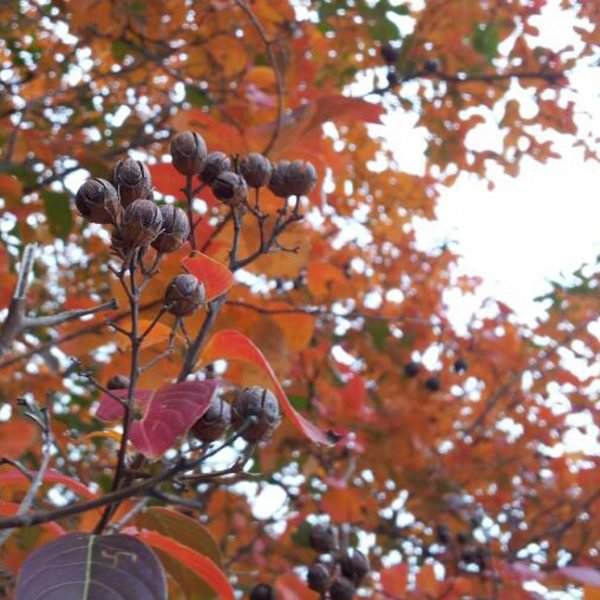
(Image Credit: GardenStyle San Antonio)
Beyond the fall foliage to look forward to at VIDA, some of the most common trees in the area that change with the cooling temperatures are crepe myrtles. Most well known for their bright summer flowers, the leaves of this hardy tree can be spotted turning flame red or bright yellow in the fall. And it doesn’t stop there. Once the leaves drop there’s more beauty visible – crepe myrtles have bark that feels away to reveal smooth trunks and branches that range from deep red to brown and gray.
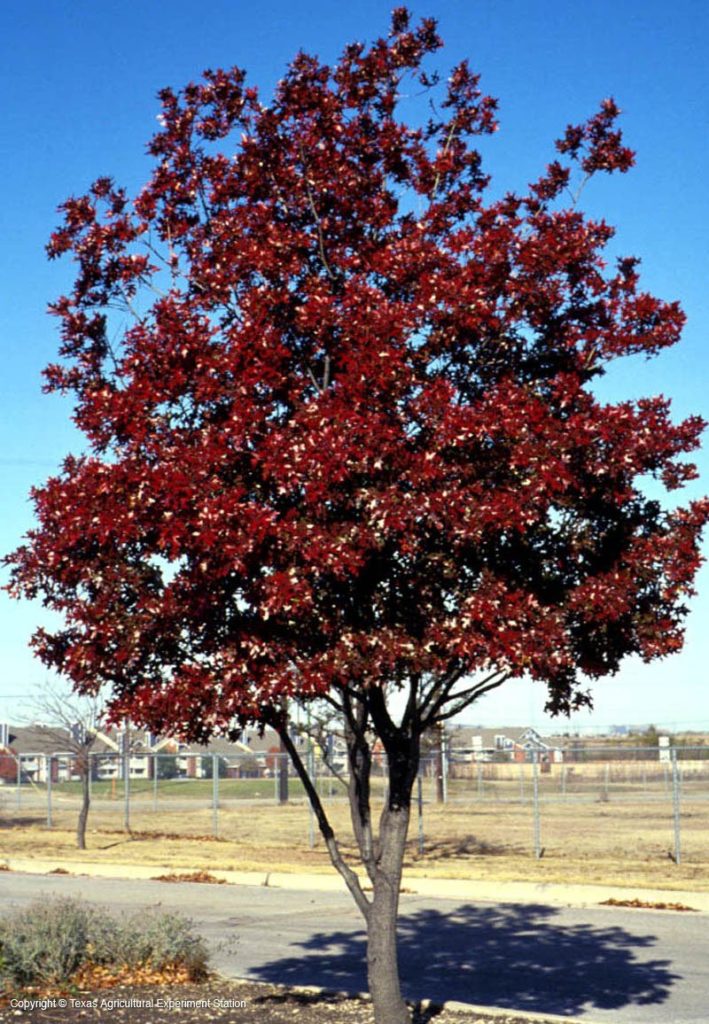
(Image Credit: TAMU Aggie Horticulture)
Texas Red Oak, also known as Spanish Oak, is common in San Antonio. You’ll recognize these trees because they are often the largest tree in an area, growing to 50-feet tall and equally as wide. They have leaves that turn vibrant red every autumn. They can grow into huge trees, and in spring it’s a feast to pollinators thanks to the beautiful green and white flowers.
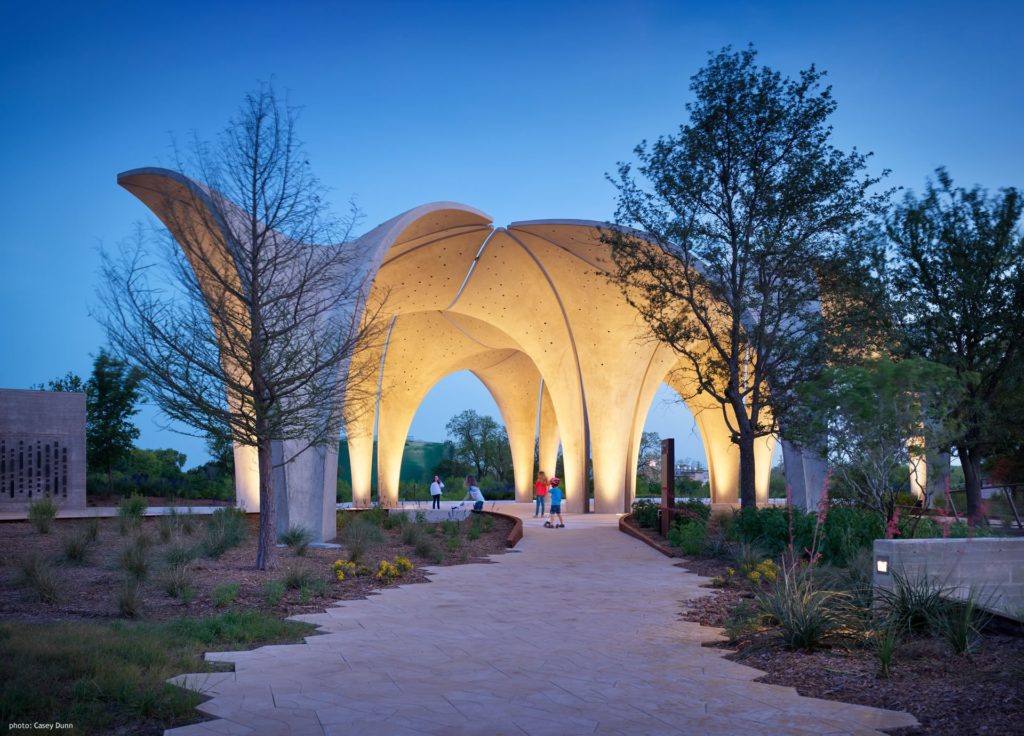
(Image Credit: San Antonio River Foundation)
One of our favorite autumn colors is only tangentially related to plants – it’s migrating butterflies. The most famous of migrating butterflies is the monarch, which inspires festivals all through the fall. Key to the success for these butterflies is supportive and diverse habitats to include milkweed, penta, and Texas lantana. Festivals celebrating the monarch’s travels are common every fall throughout South Texas including Urban 15’s Monarch and Pollinator’s Festival taking place at Confluence Park.
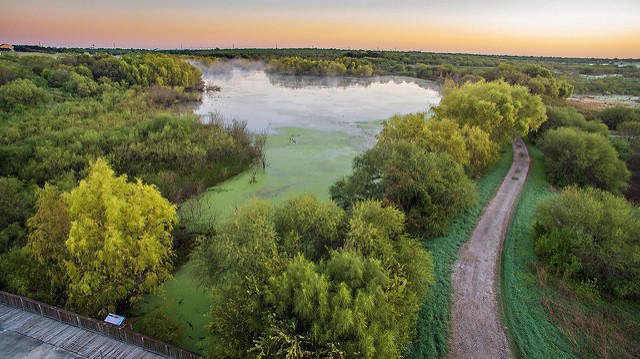
(Image Credit: Mitchell Lake Audubon Center)
Autumn is not all about leaves. We’re fortunate to be on the migratory path of several different bird and butterfly species. One of the best places to see them is at our neighbor just on the other side of Pleasanton Road, the Mitchell Lake Audubon Center. This wetland habitat is one of the last critical stopovers before the Texas Coast. It’s one of the best spots for birding in the city and is open Friday through Sunday from 8 am to 3 pm during the fall.
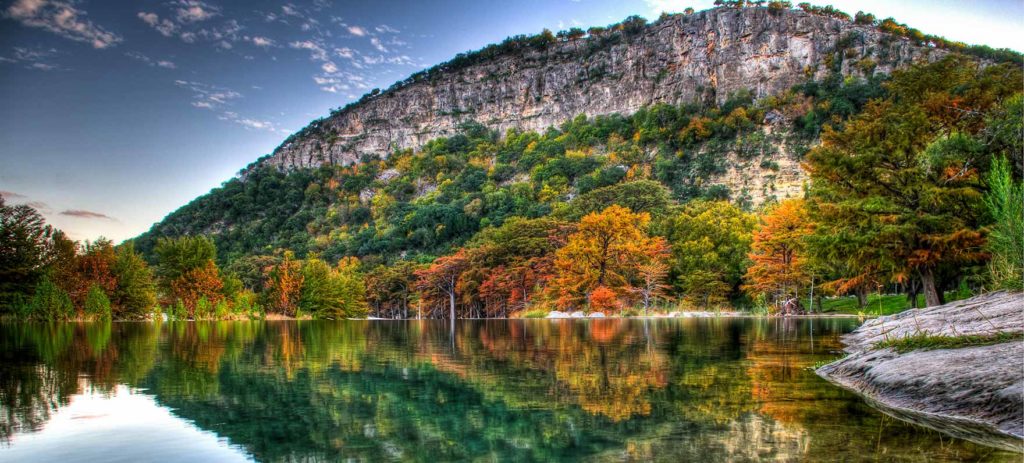
(Image Credit: Texas Parks & Wildlife)
If you’re willing to take a drive, Garner State Park and the neighboring Lost Maples are the closest places to experience a full showcase of incredible color every autumn. Garner is aflame right around the end of October and thru the end of November, thanks to a plethora of mesquite, persimmon, oak, and along the Frio River, cypress trees. Right down the road from Garner is the Lost Maples State Natural Area named for a special stand of Uvalde bigtooth maples whose brightly colored leaves carpet the ground.
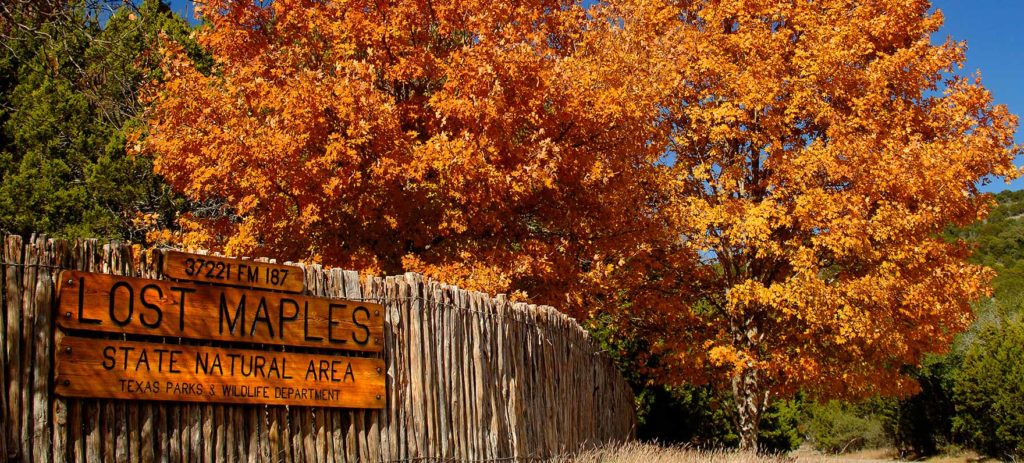
(Image Credit: Texas Parks & Wildlife)
We hope you take the time to embrace the colors and cooler weather of autumn on the city’s South Side—and by next fall, we hope to have you join us on an autumn leaf spotting walk through the VIDA greenbelt!

